The battle between the elliptical vs Stairmaster ends here. In this guide, we look at the pros and cons of each and how they perform for weight loss, HIIT workouts, functional fitness, calories burned, and much more.
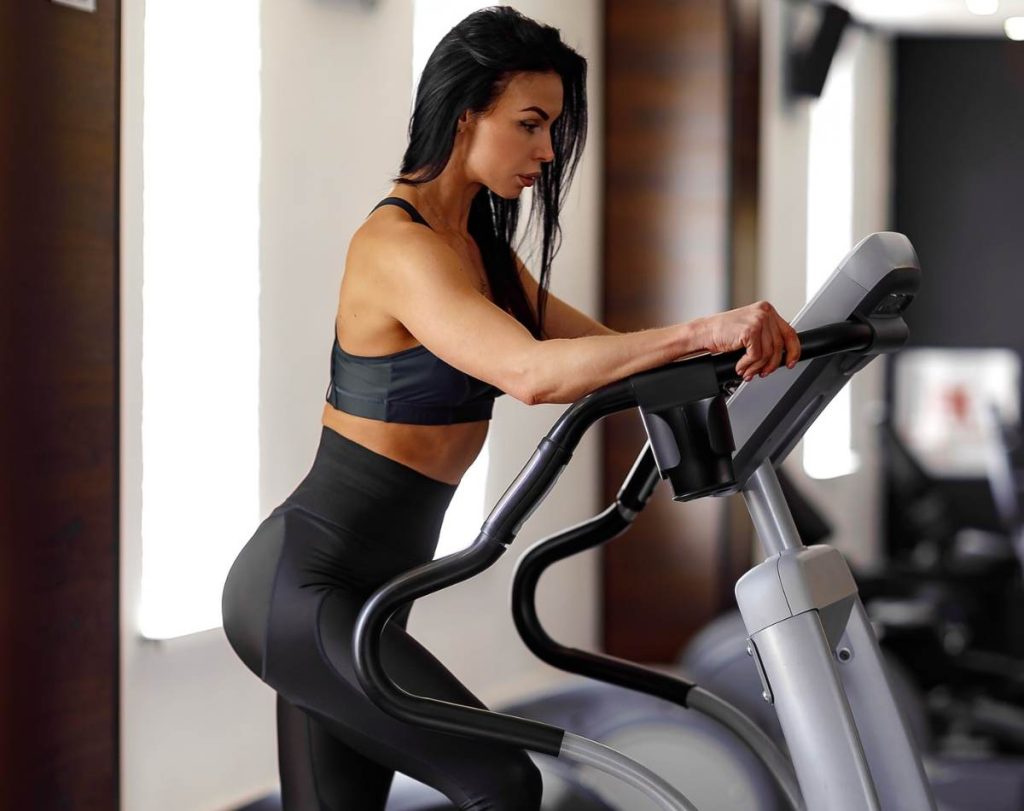
The elliptical trainer and Stairmaster are two of the most popular cardio machines for weight loss in any gym.
On any given day, you can find people sweating hard and working their butts off to get in shape, drop fat, and get fit, and they can both offer results if you put in the work.
But I’m all about maximizing efficiency at the gym and making the most out of the time you invest. So when I see two different machines, I have to ask: which gives you the better workout?
That’s what I’ll explore below, in this comparison article (much like my elliptical vs running piece).
We’ll look at all the most critical factors—calories burned, weight loss, cardio, functional fitness, and more—and compare the two workout options.
By the end of this piece, you’ll know exactly which will give you the better results for the time you invest in your training!
Let’s jump in.
Elliptical vs Stairmaster – Calories Burned
I always like to start off with an easy one: the number of calories burned.
That’s a good starting point, because it’s easy to see which machine offers better results based on how much energy you expend in the workout. Whichever exercise burns more calories, that’s clearly the “better machine” in at least that simple sense.
According to Harvard Medical School, a 185-pound person will burn 252 calories in a 30-minute “general” stair climber workout.
When talking about “general”, it usually means a workout that’s not overly intense, but keeps your heart at a decent heart rate (between the 55 and 70% MaxHR mark). The good news is that this is usually the “fat-burning zone”, meaning you’ll burn not only calories but fats, too.
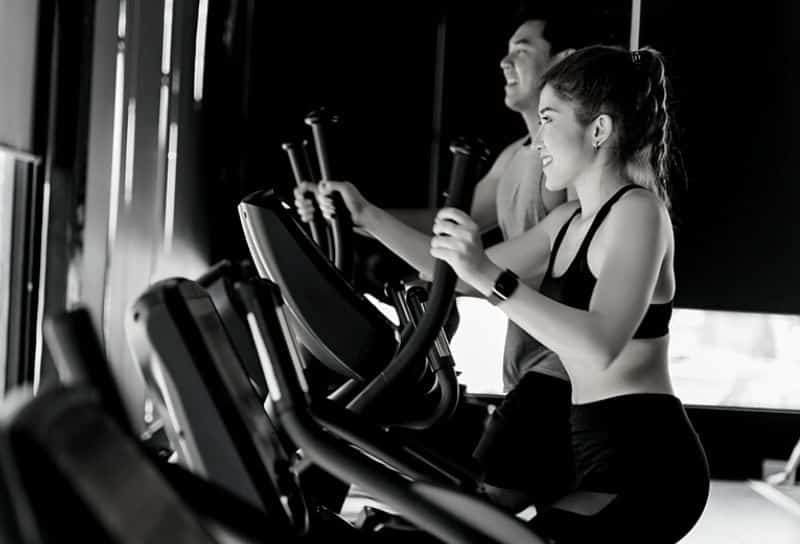
252 isn’t a bad number for a 30-minute training session. Push that to an hour, and you’re burning over 500 calories—which is roughly the number of calories you need to burn per day (above what you consume) to lose 1 pound per week.
But let’s compare that to the calories burned on the elliptical machine…
On the elliptical, that same 185-pound person will burn 378 calories.
Whoa! That’s a huge increase—a 50% increase, in fact. You burn 1.5 calories on the elliptical for every calorie you burn on the Stairmaster.
By the end of an hour, that’s 756 calories, significantly more than you’d burn in that same hour-long workout on the Stairmaster.
Pretty clear to see which machine takes the edge right off the bat, isn’t it?
Elliptical vs Stairmaster – Weight Loss
When we talk about “weight loss”, we’re talking about two factors:
1) Calories burned. Experts agree that in order to lose 1 pound of weight (the healthy way, without any crash dieting) per week, you need to be at a calorie deficit of 500 per day.
If you do not exercise, that means eating 500 calories less than your body needs to function. If you do exercise, that means burning 500 calories more than you eat.
With the Stairmaster, you’ll have to do around 1 hour of exercise to burn those 500 calories (provided you eat the daily recommended calories).
With the elliptical machine, you only have to work out for about 45 minutes to hit those same 500 calories. If you go the full hour, you can eat an additional 250 calories (on top of what you’re already eating) in order to still get sufficient energy for your body to function while being at a caloric deficit.
Pretty clear to see which machine is the winner in this regard.
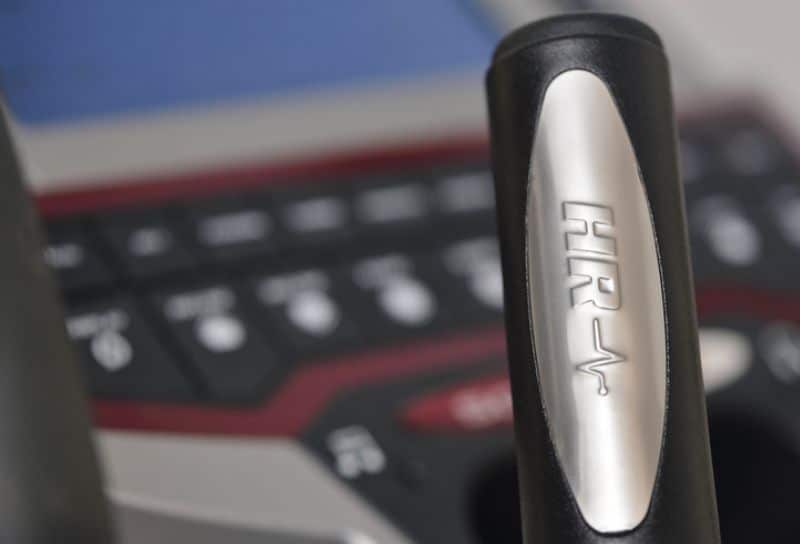
2) Aerobic exercise. Specifically, exercise that keeps your heart rate in the “fat-burning” or aerobic zone, where your body is working hard enough to need to pull extra stored energy to function but not so hard that it pushes into an “anaerobic” state.
Aerobic exercise keeps your heart rate roughly between 55 and 70% of your MaxHR, which enables your body to utilize oxygen to activate stored fats for burning rather than relying entirely on sugar-based energy (which happens in an anaerobic state).
Both the Stairmaster and elliptical machine are excellent for keeping your body in this aerobic state.
You can easily slow down or speed up your pace as needed, raise or lower the incline, and adapt to the difficulty. For aerobic exercise, you’ll find both machines equally effective.
Elliptical vs Stairmaster – Cardio
When we talk about “cardio”, we’re referring to the ability of an exercise to:
- Condition your cardiovascular system
- Increase the endurance of your heart muscles to pump blood
- Increase your lungs’ ability to absorb oxygen into your bloodstream (known as VO2 Max)
- And your blood vessels’ ability to dilate and allow blood to flow as needed.
Overall, both types of exercise are highly effective at improving your cardiovascular conditioning.
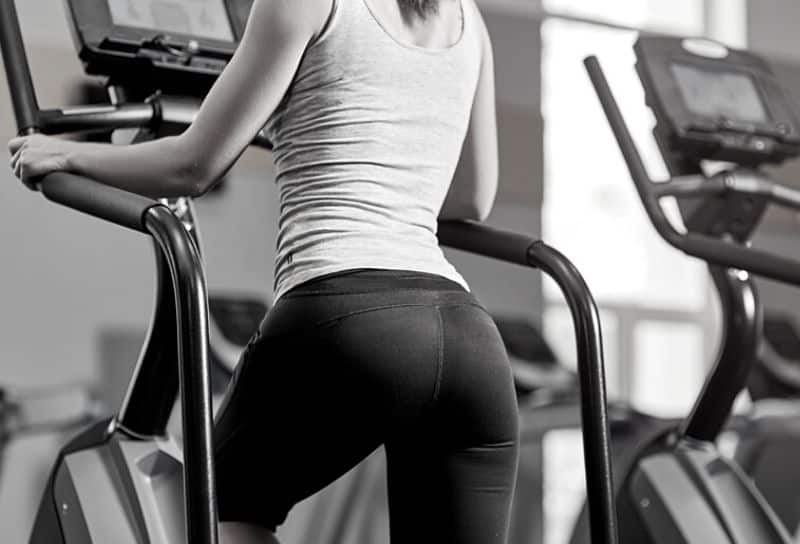
However, because elliptical training ends up burning more energy, it stands to reason that there is a higher demand placed on your energy-producing systems (metabolism), as well as the cardiovascular system that keeps your working muscles oxygenated.
Also, because you work more muscles overall with elliptical training (see the “Muscles Worked” section below), you ultimately push your cardiovascular system harder because it has more muscles to deliver oxygen to.
The result won’t be enormous, but significant enough that it’s worth mentioning here.
Elliptical vs Stairmaster – Functional Fitness
I’m all about that functional fitness!
Functional fitness is fitness that translates into your other activities of daily life. Not all types of exercise develop functional fitness. For example, building a 300-pound bench press will make you hella strong at bench pressing, but may not give you strength for all the other tasks you do daily.
Compare that to push-ups, which utilize your body weight, and the strength you develop translates into easier movement of your own body weight through your activities of daily life.
One of the great benefits of elliptical trainer is that it does help to develop functional fitness. Specifically, it focuses on strengthening your core muscles through repeated twisting movements.
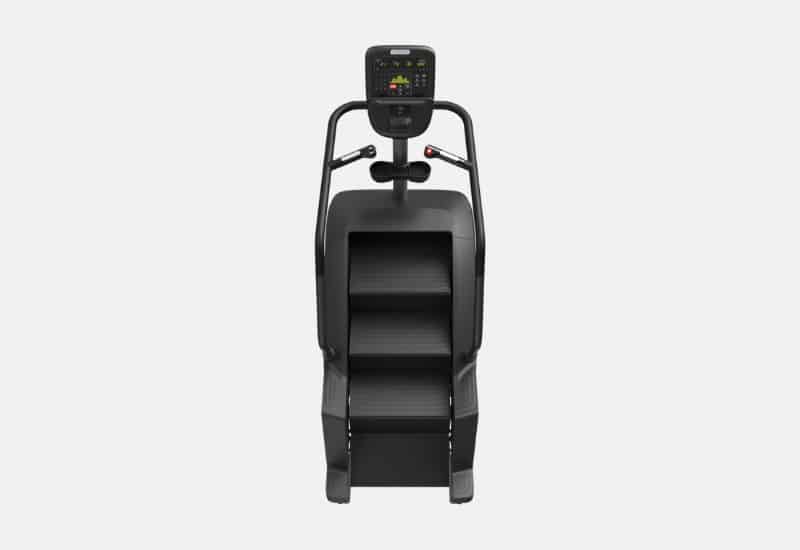
This will make your lower back, abs, and obliques more resilient and less likely to be injured as you go about your daily life, because they’ve been trained and strengthened specifically for those twisting movements.
In that regard, the elliptical is more effective at developing functional fitness than the stairmaster.
However, I’d give the stairmaster a slight edge when it comes to developing functional fitness for climbing stairs. That’s what the machine is all about, after all!
In our modern day and age, we can ride elevators and escalators all day long without really ever having to do any serious stair-climbing.
But that will actually decrease our fitness and make us weaker overall. Should we ever find ourselves in an emergency situation with no electricity, stairs may be our only access to or escape from buildings.
And stairs are everywhere—from stadiums to skyscrapers to parks to mountain trails! Developing greater functional fitness and training ourselves to handle the rigors of climbing stairs is absolutely vital to making you a fitter person overall in your daily life.
Elliptical vs Stairmaster – HIIT Workouts
High-intensity interval training, or HIIT, can be game-changing for your training sessions. Not only do you burn a lot of calories, but you build muscle, boost your metabolism for hours after working out, and finish your training sessions faster.
Really, it’s a win-win all around!
Both the Stairmaster and elliptical machines are great HIIT machines.
With the Stairmaster, you increase the speed of your climb for 30 to 60 seconds, until you’re hoofing it up those stairs at as fast a pace as you can sustain.
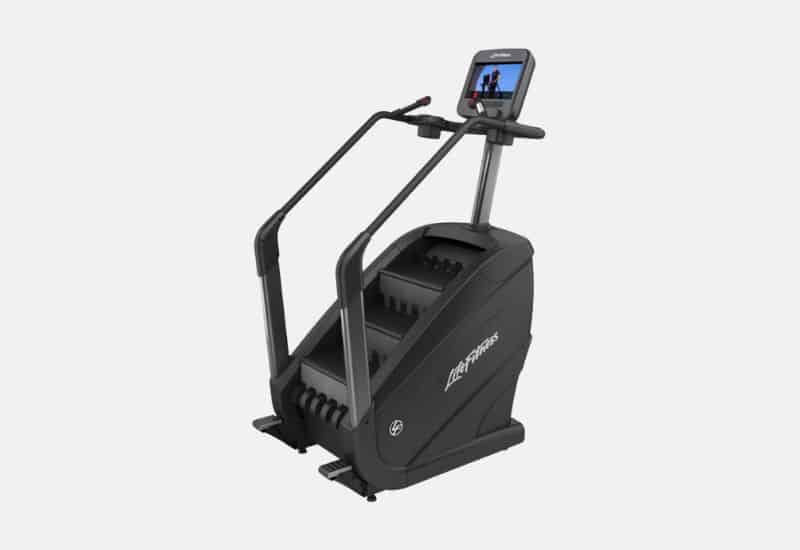
Intersperse those high-intensity stair sprints with 60 to 120-second periods of low intensity, climbing at a slower pace, and you’ve got yourself one heck of a HIIT workout.
For an elliptical trainer HIIT workout, you’ve got plenty of options. You can speed up the pace, raise the incline, increase the intensity, pedal faster, move using only your arms, squat-walk, and the list goes on.
You’ve got more options for HIIT workouts targeting your upper body, but for your lower body, it’s as effective a HIIT workout as you’d get on the stairmaster.
Elliptical vs Stairmaster – Muscles Worked
This is always one of my favorite factors to consider when evaluating any machine—be it a cardio or resistance training machine—for possible inclusion in my workouts.
Overall, it’s usually better to work with machines that target the maximum number of muscles. That way, you develop more strength overall, burn more calories, and get a better workout.
However, there will be plenty of times when I use a machine to focus specifically on a certain aspect of my fitness—be it a muscle I want to strengthen, or a form of cardiovascular exercise I want to improve.
For example, during the spring months, I’ll spend more time on the rowing machine to develop greater functional fitness for summer kayaking season. Or during the autumn months, I’ll pay more attention to my legs to prepare for snowboarding season.
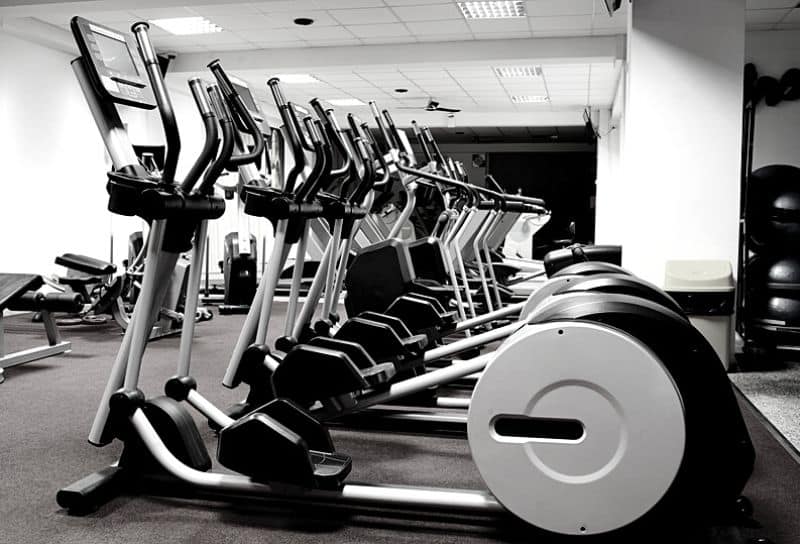
The elliptical machine is the better machine overall. If you look at the list of muscles worked on the elliptical machine, you’ll see that it includes pretty much all of your muscles:
- Chest
- Back
- Shoulders (anterior and posterior)
- Triceps
- Biceps
- Forearms
- Core (abs, lower back, obliques)
- Glutes
- Hamstrings
- Quads
- Calves
It’s a full-body workout all-in-one machine!
As you can imagine, it’s the machine I’d recommend overall.
However, on those days/weeks/months when you specifically want to target your legs, the stairmaster takes the slight edge. It focuses entirely on your lower body:
- Glutes
- Hamstrings
- Quads
- Calves
It’s a more effective glute workout than the elliptical, and it will push your quads in a way you can’t even if you raise the incline on the elliptical to the max.
At the end of the day, it’s about choosing the machine that works the specific muscles you want to target most effectively.
Elliptical vs Stairmaster – Impact
Impact is a very important factor to consider as you age.
When you’re young, your joints feel indestructible. Look at any parkour athlete and you’ll see just how much of a beating your joints can handle.
But as you age, your joints are slower to repair, and past injuries can become present pains, inflexibilities, and insufficiencies.
The more high-impact exercise you do, the more you risk damaging your joints, or causing existing damage to worsen. Thus, it’s often a good idea to find low-impact exercise to incorporate into your training to give your joints a break.
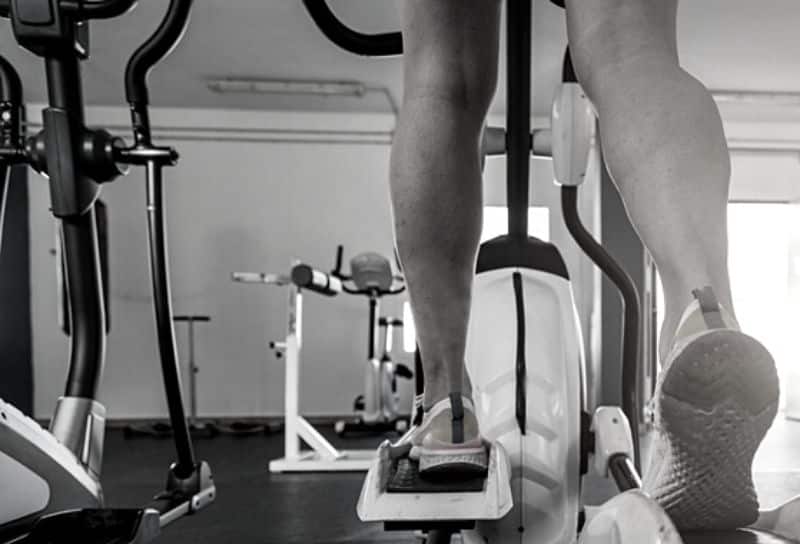
Of the two machines, the elliptical machine is by far the lower-impact. Because you never lift your feet from the pedals, there is no impact of placing your foot down.
The stairmaster is low-impact, too, because you’re placing your foot down then transitioning your weight to the front foot (rather than placing your full weight onto the front foot like you do with running).
But there is virtually zero impact using the elliptical because your foot remains firmly planted on the pedal.
Elliptical vs Stairmaster – Enjoyment
Last, but definitely not least, you’ve got to factor in how much you enjoy the workout. After all, the more you enjoy it, the easier it is to push your workout beyond just a few minutes and actually hit that full 30, 45, or 60-minute training session.
On this, the winner is very clear (at least to me). If you’ve ever pushed yourself through a 30-minute stair-climbing workout, you’ll walk away with your legs on fire, dripping sweat, and ready to relax in the steam bath.
It’s an exhausting workout, one that will leave your knees, ankles, and hips achy. You’ll have burned lots of calories and trained your leg muscles, so it’s an exercise worth doing.
On the elliptical, however, the exercise is a lot easier. There’s more engagement of your muscles overall (hence greater calorie-burning), but your legs don’t get as tired because your arms and core are there to pitch it on the workout.
You’ll still walk away from your workout feeling good, but it’s less draining. You can easily push yourself to work out a full 60 minutes and only then will you feel “done”.
(Interestingly, there is a growing number of cardio machines that incorporate the stride of an elliptical with the vertical incline of a stepper. The Bowflex Max Trainer M9 is an example of this kind of stepper-elliptical combo.)
Because all of the work on the Stairmaster is done by your legs, you’ll have a harder time pushing through the exhaustion, so it will feel more of a drag and less enjoyable. The Stairmaster makes the workout easier (and thus more pleasant overall) by getting your entire body engaged in the training.
The Bottom Line
After reading all of that, I’m pretty sure you can see which machine is the winner overall.
Yes, the Stairmaster is a highly effective machine for targeting your lower body, specifically your glutes, hamstrings, and quads.
It’s guaranteed to develop functional fitness and help you tackle those many, many staircases you’ll end up climbing in your life. It will also burn calories and help you burn fat—what’s not to love?
But, overall, the elliptical machine has a slight edge because it works more muscles (in your core and upper body as well as your legs), burns more calories overall, is gentler on your joints, and feels less strenuous.
In sum: if you are looking for one machine worth spending your time and money on, it’s definitely the elliptical.
More Guides Like This
How Much Do Ellipticals Cost? (44 Different Models Compared). Ellipticals can be a costly investment in your workout goals. Here is a look at how much each type of elliptical costs and how much to spend on one.
What’s the Best Elliptical Stride Length? (How to Choose). Elliptical stride length is crucial for getting the most out of your workouts. Here’s how to measure the right stride length for you, the benefits of long stride ellipticals, and more.